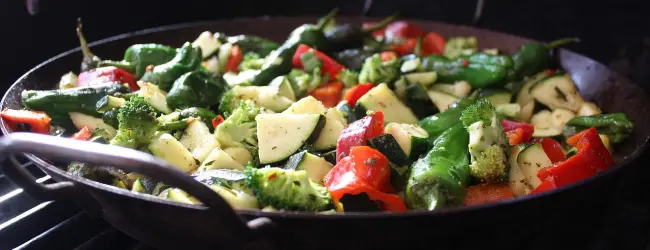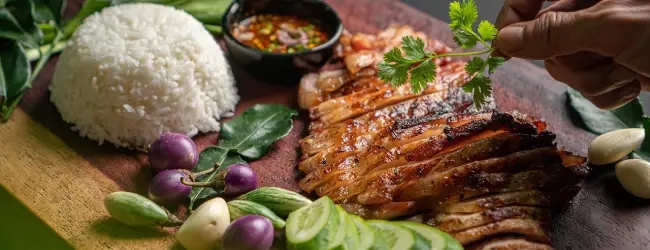In the previous article (this article), I mentioned how to reduce food costs. So today, let’s talk about how to cook tasty dishes while minimizing food costs.
How to reduce food costs with satisfaction
First of all, I summarize the previous article. Sometimes we want to reduce food costs. If we can live with less cost, we can change our lives easier. And it also affects our current mental state, such as relaxation and confidence to live in the future. Less living costs give us relaxation.
And we can reduce food costs if we cook simple and fresh dishes. Simple and seasonal dishes may not be so exciting. But the satisfaction will last a long time. If we prefer such simple and seasonal dishes to short-term excitement, it will allow us to reduce food costs with deep fulfillment.

So today, I will introduce how to combine tastes to create tasty dishes. If you can use this logic, you can cook tasty dishes with simple condiments. And it will reduce a lot of food costs.
How to make “universal taste”
I’ll start to explain our tastes. We have a sense of taste, such as saltiness, sweetness, sourness, bitterness, and umami. And I noticed that everything will be tasty if we balance these tastes well.
I call it “universal taste.” And we can cook it with a few simple ingredients. For example, try boiling pasta. Then mix it with salt, pepper, citrus juice, chicken broth, and a pinch of sugar. It is simple but delicious. This is not exciting. But it gives us long-term, deep fulfillment. This is the universal taste.

The combination of tastes
The properties of taste are as follows: (This is my logic. It could be wrong. And I added fat to this list.)
- (↑Fast taste, feel excitement) Bitterness and sourness: pepper, herbs, hot chilis, vinegar, etc.
- Fat: Vegetable oils, Butter, meat fat, etc.
- Sweetness: Sugar, starch, etc.
- Saltiness: Salt.
- (↓ Slow taste, feel fulfillment) Umami: broth, stocks, juice of fermented foods, etc.
Let’s explain every taste relation below.

The relations of tastes
The higher the list, the faster we taste. These tastes give us fast, exciting tastes. For example, fast foods, snacks, dressings, or dipping sauces use mainly fast tastes.
On the other hand, the lower the list, the slower we taste. These tastes give us long-term, deep fulfillment. Try boiling the juice of fermented foods, such as sauerkraut or kimchi. And drink it. We will have almost no taste for about 10–20 seconds. But after that, we will feel great fulfillment of umami. This is slow, long-term fulfillment.

And if we combine those opposite sides, we can make a well-balanced dish even if we use only a few ingredients. For example, the combinations of salt and pepper, or vinegar and salt create well-balanced tastes. They are complementary relationships.
On the other hand, if we combine close ones, we can strengthen these tastes. Food condiments have this tendency. For example, dressings for vegetables are mainly combined with bitterness, sourness, and oil. Herbs and oil are familiar. They multiply each other’s flavors. Similarly, broths or stocks are often combined with saltiness. They are also familiar.
Making our universal taste
And making tasty dishes is easy. We combine them all. It gives us a universal taste. Everything will be great. And we won’t get bored easily.
It means we can cook tasty dishes without special condiments that can only be used for certain dishes. We can use affordable materials. And it will reduce a lot of food costs while giving us satisfaction.

My three layers of condiments
In my case, I organized my condiments. Now I combine the three layers as follows:
- Extra flavor Layer (Bitterness, Sourness, Fat):
- Pepper
- Curry powder
- Chinese five spices
- Garlic and ginger chili oil
- Fermented salsa
- Fruit vinegar
- Basic layer (Sweetness, Saltiness):
- Sweeteners (Erythritol, Sugar, Flour)
- Salt
- Sauce layer (Saltiness, Umami):
- Fermented mushroom sauce for dipping
- Fermented mushroom and onion sauce for soup

I combine them and make tastes. It’s simple, but I can make enough variety. I can cook similar cuisines from various countries, such as Japanese, Chinese, Korean, Mexican, Spanish, Italian, French, and Indian. And they are all delicious.
Although I will change and progress with them more and more, it has given me enough fulfillment so far. And my costs for condiments are incredibly low. I spent no money on condiments this month.
Conclusion
So today, I introduced how to combine tastes to create tasty dishes. The “universal taste” will give us deep fulfillment, even if it is a simple dish.
If you can use this logic, you can cook tasty dishes without special condiments. And it would save a lot of money on food and its condiments.
Thank you for reading this article. I hope to see you at the next one.


